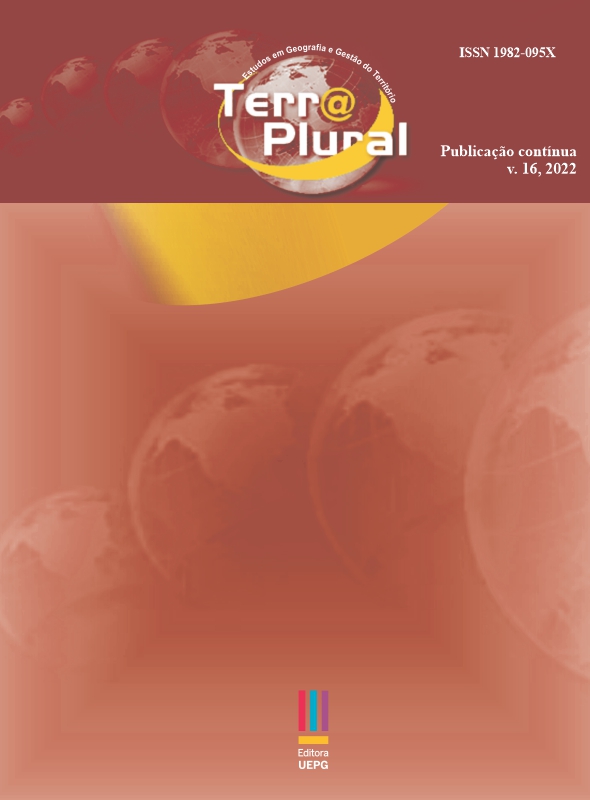Design Storms Software
DOI:
https://doi.org/10.5212/TerraPlural.v.16.2220175.036Keywords:
Hidrology, IDF relationships, Alternating Block Method, Urban drainageAbstract
A design storm can be defined as a precipitation pattern used to determine
indirectly the design flood, which is important data in many hydrologic design projects. Due to the difficulty to obtain historical data on precipitation, it has become common to construct design storms using general characteristics of precipitation in the
surrounding region, represented by intensity-duration-frequency (IDF) relationships. In addition, it’s also necessary to specify the design return period, storm duration, and temporal distribution. For this purpose, is used the Alternating Block Method. In
view of software development applied to hydrology and to make it more practical using this Alternating Block Method, this article intended to develop the AltBlock, a software able to calculate design storms automatically. Using Visual Studio .NET and the programming language Visual Studio .NET it was sought to build a graphical user-friendly interface. The AltBlock is applicable to any location and it’s useful for educational uses, engineering projects, and hydrological studies.
Downloads
Downloads
Published
How to Cite
Issue
Section
License
Copyright (c) 2022 Elizandra Biá Viana, Taís Arriero Shinma Galbetti, Marcus Vinícius Galbetti, Vinícius de Oliveira Ribeiro, Jonailce Oliveira Diodato

This work is licensed under a Creative Commons Attribution-NonCommercial-NoDerivatives 4.0 International License.
Revista Terr@ Plural will obtain the auctorial rights for all published texts. This also implies that the text can be published anywhere in the world, including all rights on renewal, expansion, and dissemination of the contribution, as well as other subsidiary rights. The authors get permission to publish the contribution in other media, printed or digital, it may be in Portuguese or translation since the publication is credited to Revista Terr@ Plural. It allows the self-archiving of published articles in institutional repositories, thematic repositories, or personal web pages in the pdf version downloaded from the journal's site.















